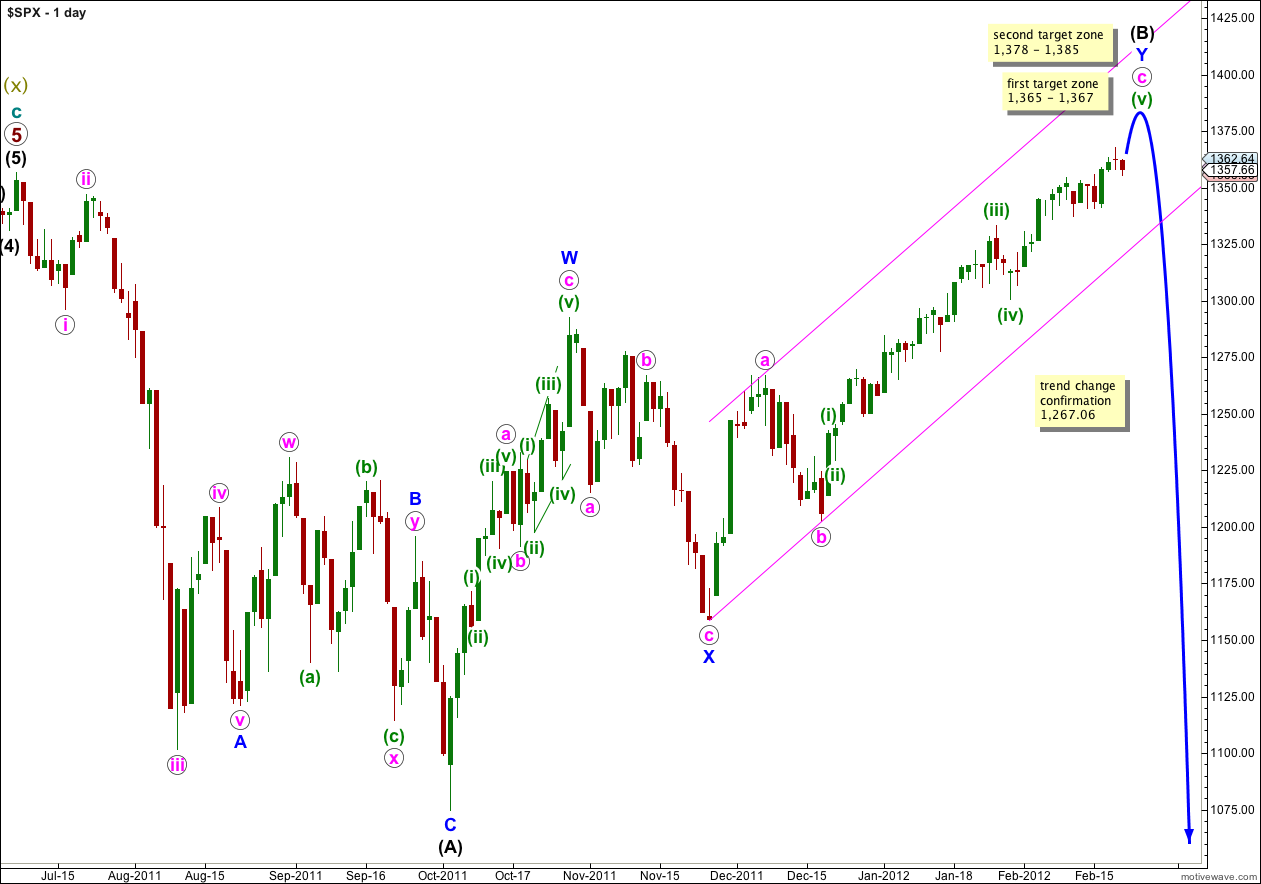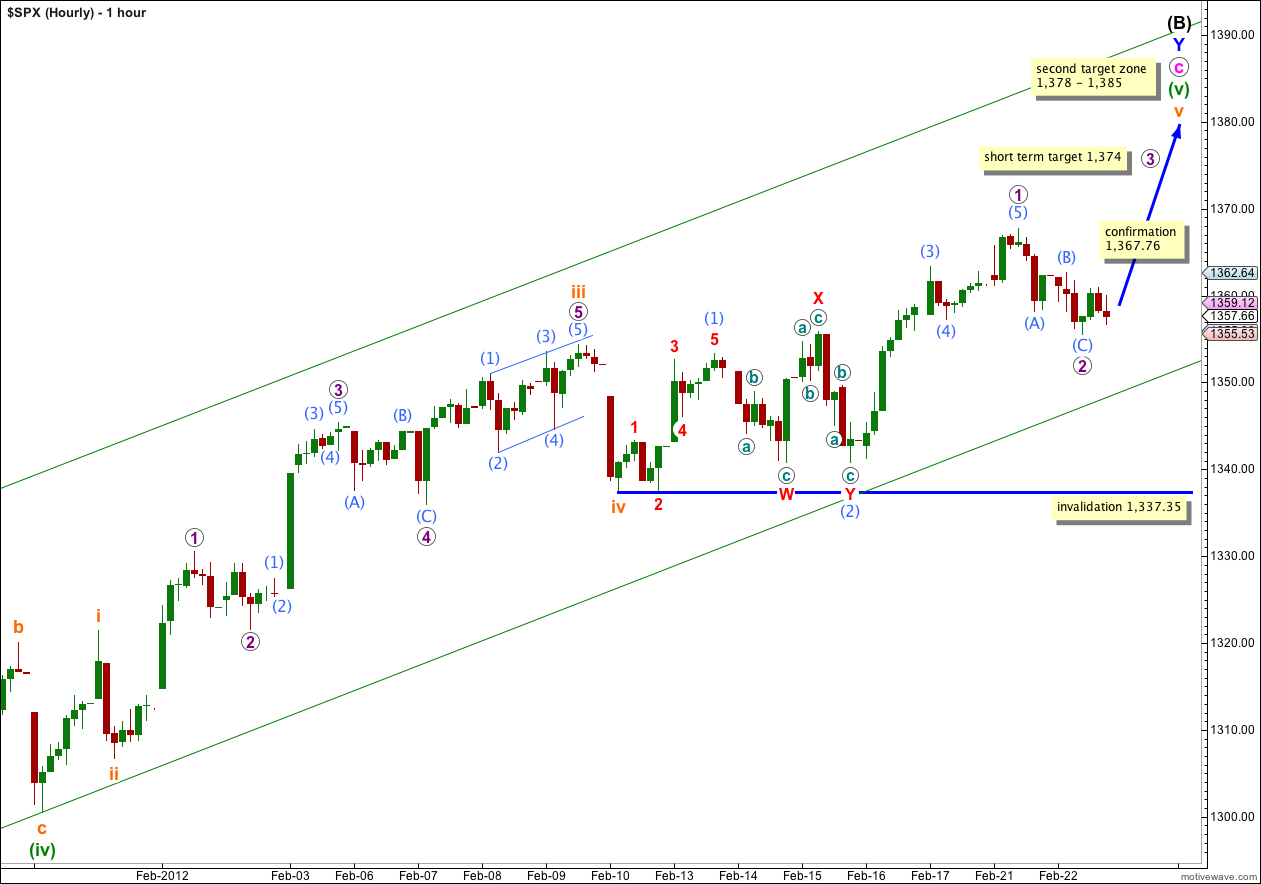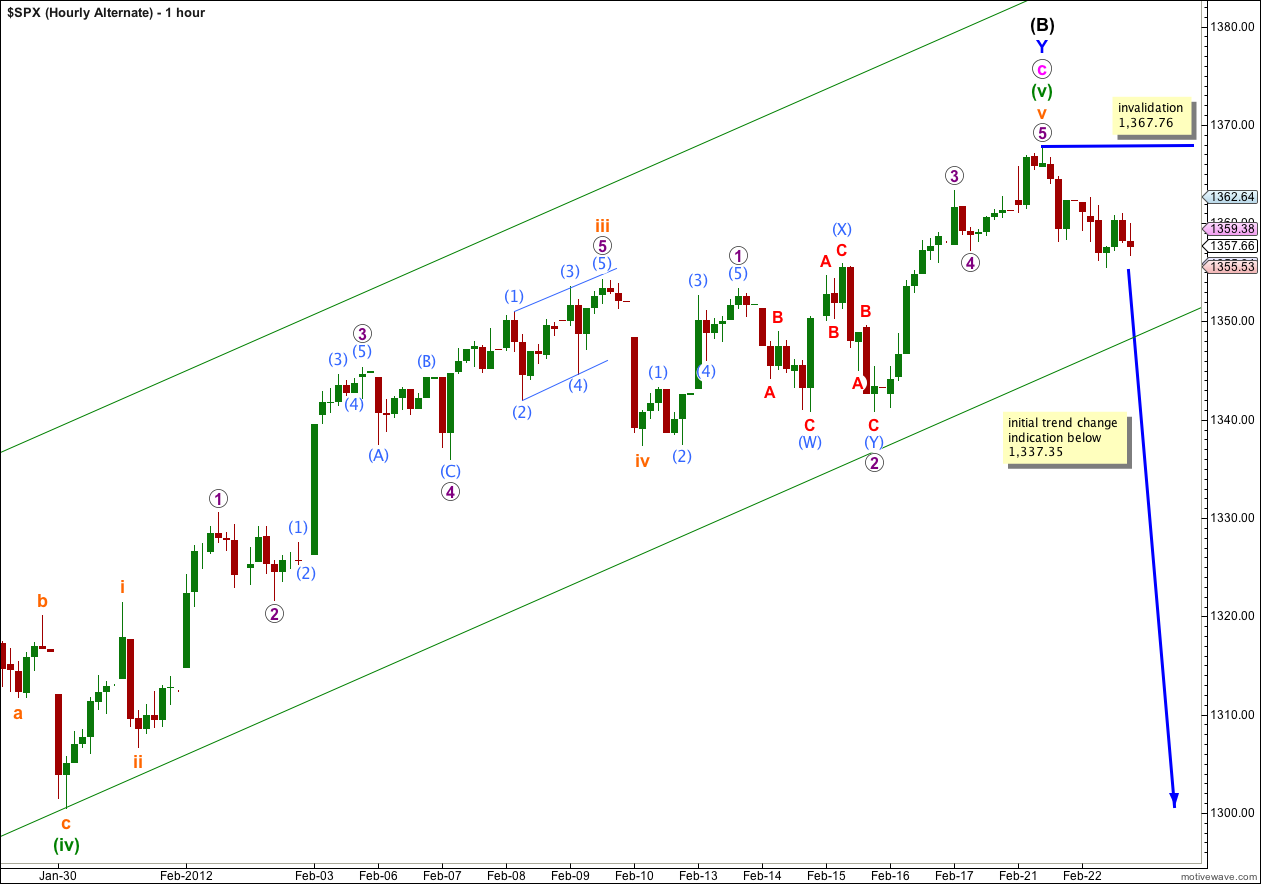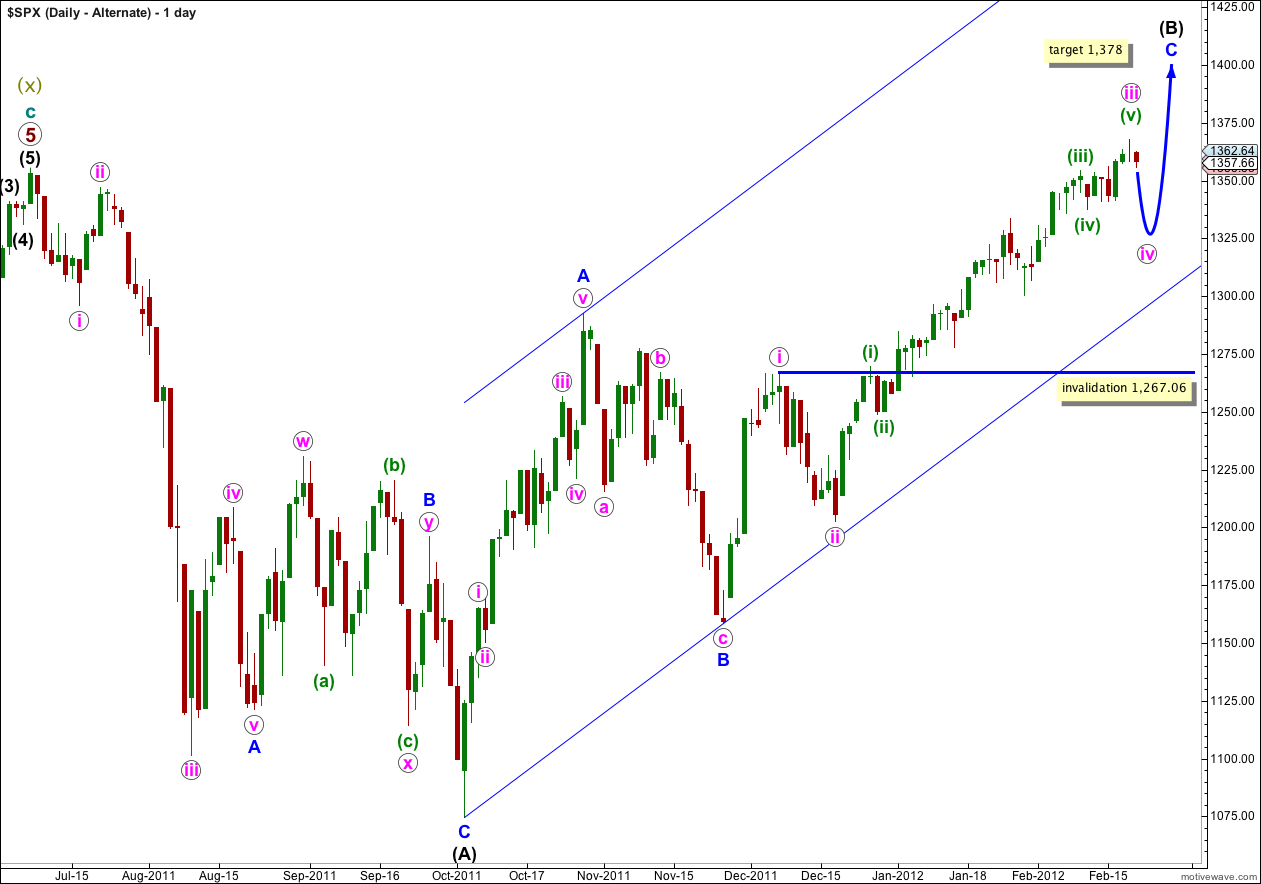Slight downwards movement is within our allowable range for a small second wave correction, which has taken its time.
Both our main and alternate hourly wave counts remain valid as we still have no confirmation of a trend change. When one or the other is invalidated by price movement out of a narrowly defined range then we shall have a little more clarity. At this stage we should assume that the trend remains the same, until proved otherwise.
Click on the charts below to enlarge.
Our main daily wave count expects it is more likely that wave (B) black is incomplete. The first target zone has been reached and this fits with the alternate hourly wave count. The second target zone fits with the main hourly wave count.
This main wave count has a higher probability than the alternate daily chart below because it sees wave W blue upwards as a three wave zigzag, which has a much better fit than trying to see it as a five wave impulse (the alternate idea).
Wave (B) black may move beyond the start of wave (A) black, and in fact for flat corrections this is most common. The maximum common length of B in relation to A within a flat is 138%. This would be achieved at 1,459. It is likely we shall see a trend change before this price point.
When wave (B) is complete then wave (C) must unfold in five waves down, as either an impulse or an ending diagonal. An impulse is the most likely and is easier to analyse. Wave (C) black does not have to make a new low below the end of wave (A) black, but it is extremely likely to do so.
There is unfortunately no clear Elliott wave rule regarding the length of wave (B) in relation to wave (A) for a flat correction. If price continues above 1,469 then this wave count would not be invalidated, but the probability would reduce significantly.
Movement below 1,267.06 would invalidate the alternate daily chart below and confirm this main wave count. At that stage we may have confidence that the S&P 500 has seen a trend change.
Movement below the parallel channel containing the zigzag for wave Y blue would also provide some indication of a trend change.
Main Hourly Wave Count.
This main hourly wave count assumes that the trend remains the same, until proved otherwise.
Downwards movement for Wednesday’s session is so far a 5-3-5 zigzag structure. There is no Fibonacci ratio between waves (A) and (C) aqua within wave 2 purple.
It is possible that wave 2 purple may continue further as a double zigzag or a flat correction. I will leave the invalidation point at the start of wave 1 purple at 1,337.35 to allow for these possibilities. If wave 2 purple does extend lower and sideways then it may not move beyond the start of wave 1 purple.
At 1,374 wave 3 purple would reach 0.618 the length of wave 1 purple. This target will apply only as long as wave 2 purple does not move lower.
If price moves above 1,367.76 to a new high then our alternate hourly wave count would be invalidated and this would be our only wave count. At that stage we may have a little more confidence that price should keep rising towards our target zone.
At 1,378 wave c pink would reach 1.618 the length of wave a pink. At 1,385 wave v orange would reach equality in length with wave iii orange. This gives us a 7 point target zone.
When waves 3 and 4 purple within wave v orange are complete I will use Fibonacci ratios at purple degree to refine this target zone and try to narrow it down further.
Alternate Hourly Wave Count.
If wave (B) black is complete then downwards movement for Wednesday’s session could be seen as a 1-2, 1-2 series of overlapping first and second waves. What looks so far like a three wave structure may develop further into a five, with an extension in one of the actionary waves.
Only movement below 1,337.35 would provide some indication that this wave count may be correct. At that stage I would still want to see a breach of the parallel channel on the daily chart to provide more confidence in a trend change.
This is a very large trend change and when wave (B) black is over wave (C) black should see price fall in a new downwards trend to last months and take the S&P 500 to new lows. Patience about these large trend changes should be well rewarded.
Alternate Daily Wave Count.
This alternate has a lower probability than the main daily chart.
If the upwards wave labeled here A blue was a five, and not a three, then wave (B) black is a single zigzag. Wave C blue is incomplete.
The subdivision of wave A blue as a five is not nearly as satisfactory as seeing it as a three, which the main wave count does. This is the reason why this alternate has a much lower probability.
It looks increasingly like wave iii pink would be incomplete. When wave iv pink begins we would expect it to last one to two weeks and be a relatively shallow correction of wave iii pink. It should look about equal in duration to wave ii pink.
Wave iv pink may not move into wave i pink price territory and this wave count is invalidated with movement below 1,267.06.




